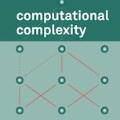This paper studies the transmit beamforming in a downlink integrated sensing and communication (ISAC) system, where a base station (BS) equipped with a uniform linear array (ULA) sends combined information-bearing and dedicated radar signals to simultaneously perform downlink multiuser communication and radar target sensing. Under this setup, we maximize the radar sensing performance (in terms of minimizing the beampattern matching errors or maximizing the minimum beampattern gains), subject to the communication users' minimum signal-to-interference-plus-noise ratio (SINR) requirements and the BS's transmit power constraints. In particular, we consider two types of communication receivers, namely Type-I and Type-II receivers, which do not have and do have the capability of cancelling the interference from the {\emph{a-priori}} known dedicated radar signals, respectively. Under both Type-I and Type-II receivers, the beampattern matching and minimum beampattern gain maximization problems are globally optimally solved via applying the semidefinite relaxation (SDR) technique together with the rigorous proof of the tightness of SDR for both Type-I and Type-II receivers under the two design criteria. It is shown that at the optimality, dedicated radar signals are not required with Type-I receivers under some specific conditions, while dedicated radar signals are always needed to enhance the performance with Type-II receivers. Numerical results show that the minimum beampattern gain maximization leads to significantly higher beampattern gains at the worst-case sensing angles with a much lower computational complexity than the beampattern matching design. It is also shown that by exploiting the capability of canceling the interference caused by the radar signals, the case with Type-II receivers results in better sensing performance than that with Type-I receivers and other conventional designs.
翻译:本文研究在下行综合感知和通信系统(ISAC)下行综合感知和通信系统(ISAC)中的传输光束,在这个系统中,配备了统一的线性阵列(ULA)的基础站(BS)发送了两种类型的通信接收器,即一型和二型接收器,这些接收器没有并且确实有能力同时进行下行多用户通讯和雷达目标的感测。在这个设置下,我们最大限度地提高雷达感应性能(在尽可能减少光束匹配错误或最大限度地增加最小光电闪烁增益方面),这取决于通信用户的最低信号到干涉率(SINR)和BS的能量限制。特别是,我们考虑两种类型的通信接收器,即类型I和二型接收器的感应力,在特定的雷达信号下显示最精确性能,在最精确性能中,在最精确的性能上,在最精确的性能上显示最精确的性能,在最精确性能上,在最精确的性能上,在最精确的性能标准下,在最精确的性能标准下,在最精确的性能上显示最优的性能是最优的性能,在特定的性能标准下,在特定的性能标准下,在特定的性能上显示最优的性能,在特定的性能标准下,在特定的性能上显示最优性能。



